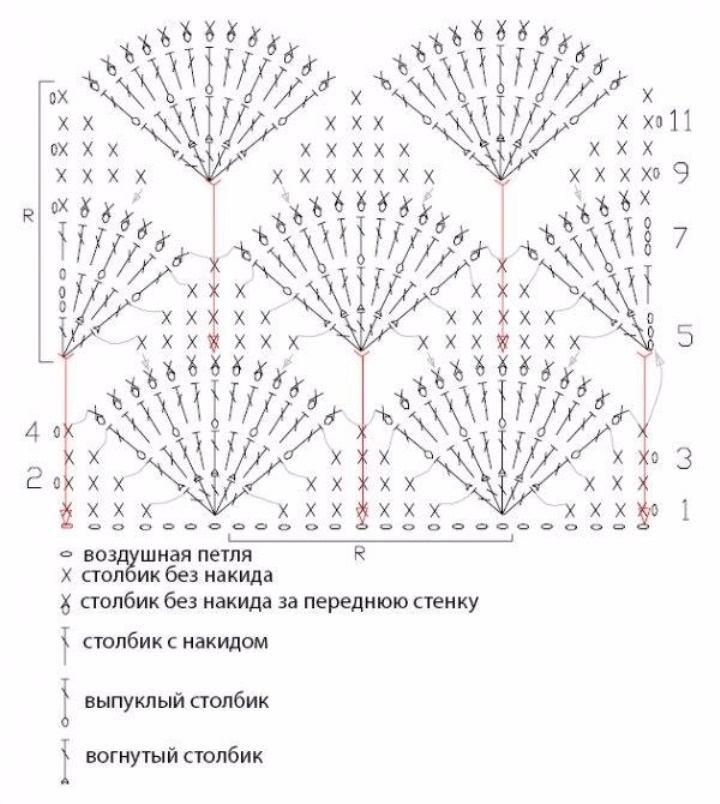Simple and very beautiful crochet pattern.

An interesting implementation of our assistants "thread and hook" in a magnificent pattern. This pattern is not easy to perform, but it looks quite nice in the product.

Stretched loops

Wavy lines of rows and unusually long loops between them give the knitted product a special elegance. Knitted fabric is completely transparent - just for hot summer days. The technique of knitting elongated loops is much simpler than it may seem at first.
General information
Elongated loops are formed with the help of nakida, they are also called long, because after dropping nakida stretched in length. When combining elongated loops with other patterns, a very special structure of the knitted fabric is created. This knitting technique is a priority when creating knitted fabrics with “transparent”, through sections. In combination with other techniques, unlimited possibilities arise in the development of a large number of original patterns.
Smooth rows of elongated loops

1. To obtain an elongated loop in the front row after a knit loop, make 2 nakida, i.e., twist the right knitting needle 2 times around the thread, then knit the next loop.

2. In the next purl row, both nakida fold, knit the next loop purl and stretch - formed an elongated or long loop.

Scheme. Repeat from the 1st to the 8th rows.

Wavy rows of elongated loops
There are many options for knitting with nakida. If the loops are knitted with different amounts of nakida, the elongated loops have different lengths relative to each other, wavy lines are formed.
1. According to the scheme, after a knit loop, thread a needle 2 or 3 times around the knitting needle, knit the next loop according to the pattern.

2. In the next row, fold the quilts, pull out the loops and knit, as shown in the diagram.

Scheme. Repeat the rapport between the arrows. Repeat from the 1st to the 8th rows.

Council The loop is longer than usual, can be obtained by pulling the thread from the loop of the underlying row. Introduce the needle into the loop, located one row below the loop of the knit row, pull the thread, reset the upper loop from the left needle (the dropped loop is unraveled).
Tracery pattern
1. For this pattern in the front row after each loop, make 3 nakida.

2. In the next purl row of 5 loops, transfer to the right knitting needle, while throwing the nakida in this group of loops and pulling the loops.

3. Return the elongated 5 loops to the left knitting needle and knit these loops together on the front one.

4. Then alternately * make a right knit 1 knit and 5 loops again knit together the front, from * repeat 1 time. As a result, from 5 long loops it turned out 5 ordinary loops. The techniques described in paragraphs 2, 3, 4, repeat to the end of the purse row. From the next row, you can continue knitting with a pattern: alternately 6 rows of the front surface and 2 rows of an openwork pattern.

1. First, perform elongated loops; they are formed in the purl row with the help of 2 nakidov after each loop. In the next front row, successively remove 6 loops, fold off the nakida, and 6 elongated loops again, return them to the left needle. Then leave the first 3 loops on the auxiliary spoke at work, and knit the next 3 loops with the front ones.

2. Then knit facial 3 loops with auxiliary needles. For this pattern, the crossing is repeated in every 4th row, see the diagram.

Scheme. Start with the loops before the 1st arrow, repeat the rapport between the arrows, end with the loops after the 2nd arrow. Repeat from the 1st to the 8th rows.
Legend